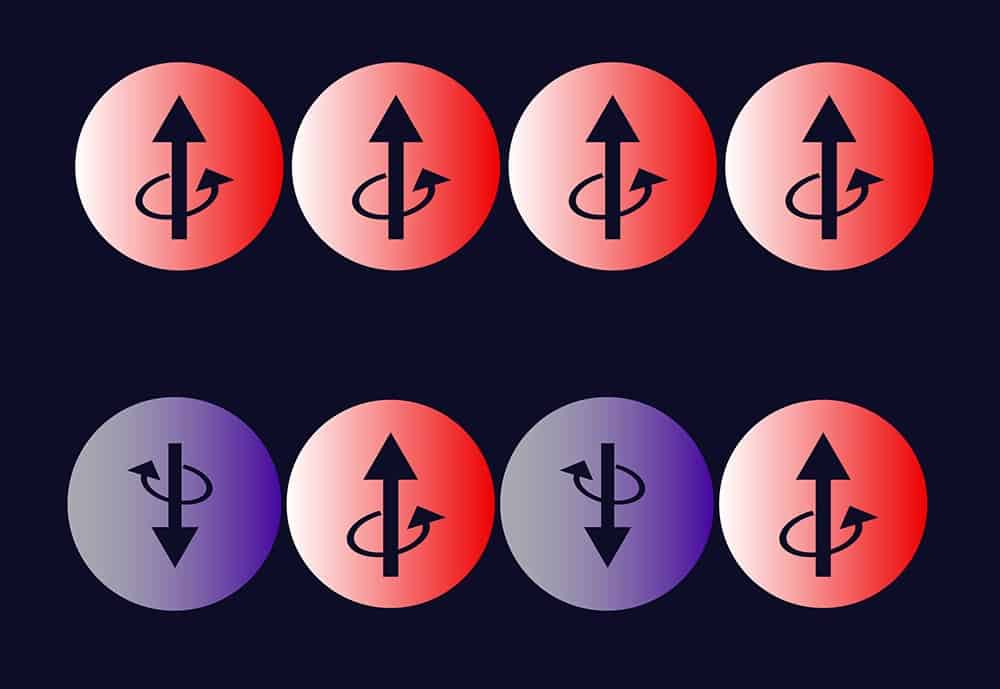
Researchers in Russia have built a highly accurate, atomic-scale gyroscope that detects rotation through changes in the coupled spins of electrons and nitrogen nuclei. Led by Alexey Akimov at the Lebedev Physical Institute in Moscow, the team created its device by exploiting defects in the atomic structure of diamond. Their approach could enable tiny gyroscopes to be integrated onto inexpensive microchips that could be used on lightweight aerial vehicles.
Within a traditional gyroscope, conservation of angular momentum ensures that the rotational axis of a spinning disk remains fixed even as its casing rotates. As a result, a gyroscope can be used to detect rotation, which makes useful for navigation.
On a much smaller scale, electrons and some atoms and nuclei have intrinsic angular momenta called spin. It is therefore possible to detect rotation by measuring transitions in the quantum spin states of these particles. Previously, this has been attempted using trapped atomic gases – but because such atoms can drift and collide with their surrounding walls, these measurements have been unreliable.
Focus on nuclear spins
Instead of using drifting atoms, Akimov’s team have used nitrogen vacancy (NV) centres in diamond. These occur when two adjacent carbon atoms in a diamond lattice are replaced with a nitrogen atom and a lattice vacancy. An NV centre has both nuclear and electronic spins, but unlike atoms in a gas it cannot move. An important feature of an NV centre is that the spin state of the electron can be read-out by shining light on it, which causes it to emit distinctive light of its own.
Previously, electron spins in NV centres have been used to detect extremely rapid rotation. In this latest experiment, however, the focus was on the nuclear spins, which are much less susceptible to noise and therefore more suitable for detecting much slower rotations.
Diamond wafer
The team’s setup comprised an ensemble of NV centres within a thin diamond wafer that was placed rotating platform. Using an applied magnetic field along with laser, microwave and radio-frequency pulses, the team set the nuclear spins to all point in the same direction.

Defect spins slow diamond motion
The diamond then rotated slowly for 2 ms, after which the team coupled the nuclear and electronic spins. This allowed them to measure the orientations of the nuclear spins. They then used this information to determine the platform’s rotational speed with no stationary reference required.
The team says that the performance of their device is on par with commercially available gyroscopes based on microelectromechanical (MEMs) systems. These use vibrating, rather than rotating, masses but suffer from a lack of long-term stability. Akimov and colleagues say that their diamond-based system could be readily integrated into existing microchips and could be used to improve the navigational abilities of lightweight aerial vehicles, including unmanned drones.
The gyroscope is described in Physical Review Letters.
